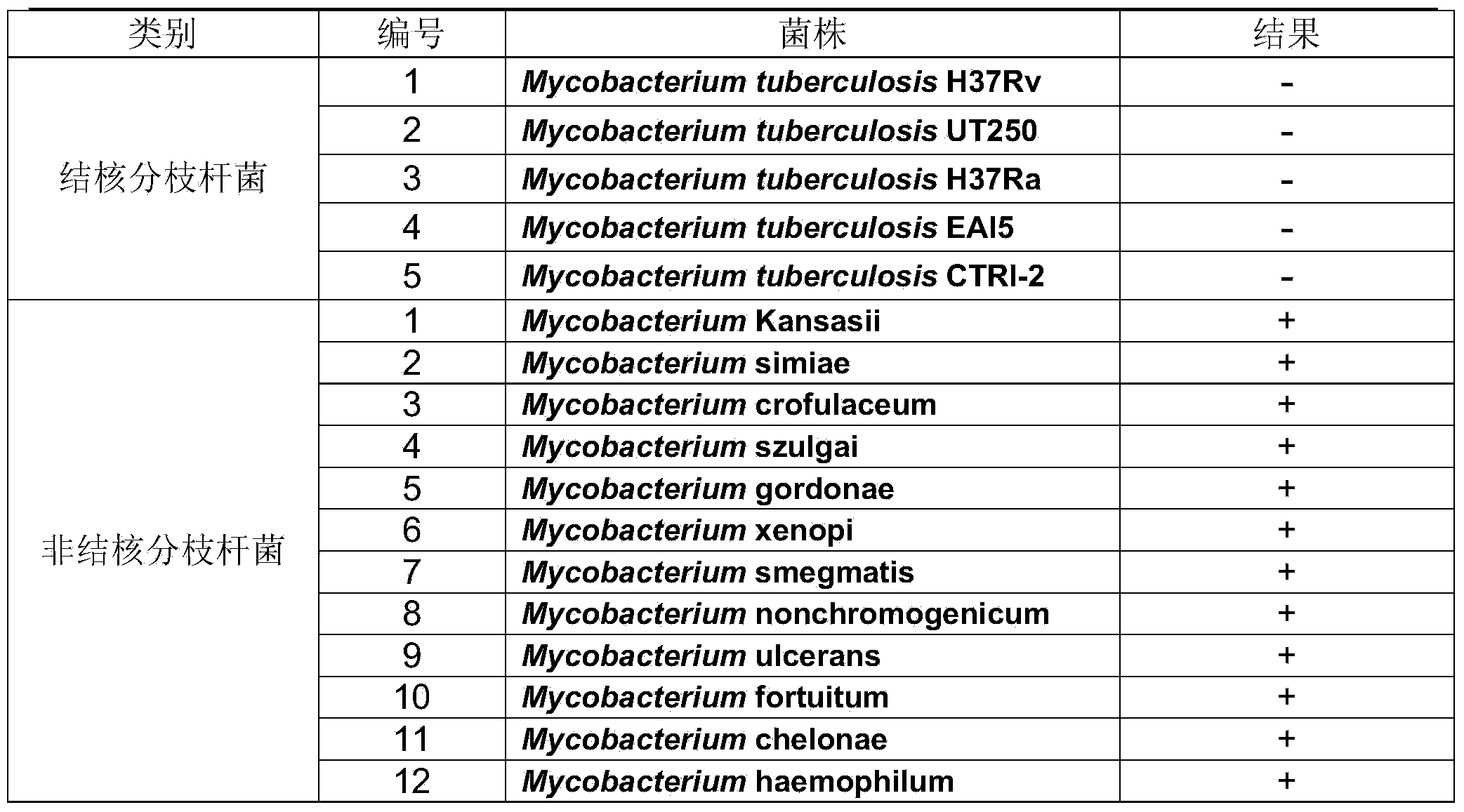Molecular beacon probe for quickly detecting non-Mycobacterium tuberculosis and detection method using same
A technology of molecular beacon probes and mycobacteria, which is applied in the direction of microorganism-based methods, biochemical equipment and methods, and measurement/testing of microorganisms, can solve the problem of inability to distinguish tuberculosis mycobacteria from non-tuberculous mycobacteria, Can not get positive results, low sensitivity and other problems, to achieve the effect of rapid detection, high specificity, high signal intensity
- Summary
- Abstract
- Description
- Claims
- Application Information
AI Technical Summary
Problems solved by technology
Method used
Image
Examples
Embodiment 1
[0037] Example 1: Design and synthesis of molecular beacon probes and oligonucleotide sequences
[0038] Select a target sequence that can specifically detect non-tuberculous mycobacteria, and design a molecular beacon probe that is completely complementary to the target sequence:
[0039] Beacon NTM: (5'-CY3-CATTGTACGCCCAGTAATTCCGGACCAATG–BHQ1-3');
[0040] The molecular beacon is a specific sequence of a neck ring structure composed of bases. The 5' end of the probe is labeled with Cy3, and the 3' end is labeled with BHQ1. The excitation wavelength of the fluorescent group is 552nm, and the detection wavelength is 570nm; artificially designed synthetic molecules The beacon and its fully complementary oligonucleotide (5'-GTCCGGAATTACTGGGCGTA-3'). Through thermal denaturation curve experiments on molecular beacons and oligonucleotides, it was determined that the optimal reaction temperature of fluorescence in situ hybridization was 52°C, and the optimal concentration of deion...
Embodiment 2
[0041] Example 2: Detection of mycobacterial standard strains using Mycobeacon Probe FISH.
[0042] Mycobacterium standard strains were purchased from ATCC, and a total of 5 tuberculosis mycobacteria and 12 nontuberculous mycobacteria were detected.
[0043] The test kit includes:
[0044] (1) Lysis solution: 4% (w / v) sodium hydroxide;
[0045](2) Hybridization solution: 10% (w / v) dextran sulfate, 10mM NaCl, 20% (v / v) formamide, 0.1% (w / v) sodium pyrophosphate, 0.2% (w / v) poly Vinylpyrrolidone, 0.2% (w / v) polysucrose, 5mM Na2EDTA, 0.1% (v / v) TritonX-100, 50mM Tris / HCl (pH7.5), 10ng / μL molecular beacon probe, the The base sequence of the molecular beacon probe is:
[0046] Beacon NTM: 5'-CY3-CATTGTACGCCCAGTAATTCCGGACCAATG–BHQ1-3';
[0047] (3) Termination solution: 1% (v / v) methyl disulfuric acid;
[0048] (4) Washing solution: 5mM Tris, 15mM NaCl, 0.1% (v / v) Triton X-100, pH 10.
[0049] Detection method:
[0050] (1) Take 10 μL of sputum sample and drop it on a glass s...
PUM
 Login to View More
Login to View More Abstract
Description
Claims
Application Information
 Login to View More
Login to View More - R&D
- Intellectual Property
- Life Sciences
- Materials
- Tech Scout
- Unparalleled Data Quality
- Higher Quality Content
- 60% Fewer Hallucinations
Browse by: Latest US Patents, China's latest patents, Technical Efficacy Thesaurus, Application Domain, Technology Topic, Popular Technical Reports.
© 2025 PatSnap. All rights reserved.Legal|Privacy policy|Modern Slavery Act Transparency Statement|Sitemap|About US| Contact US: help@patsnap.com

